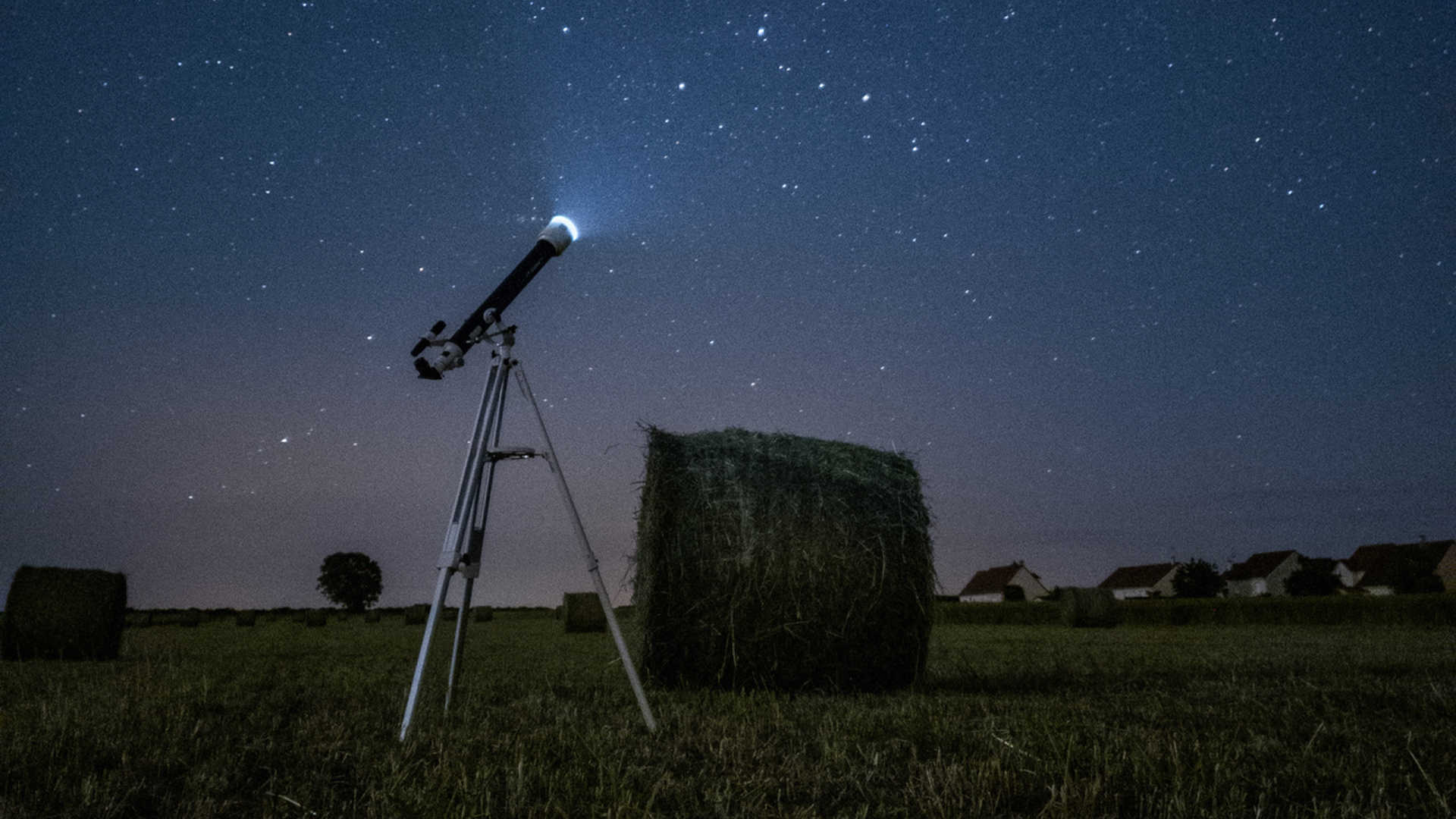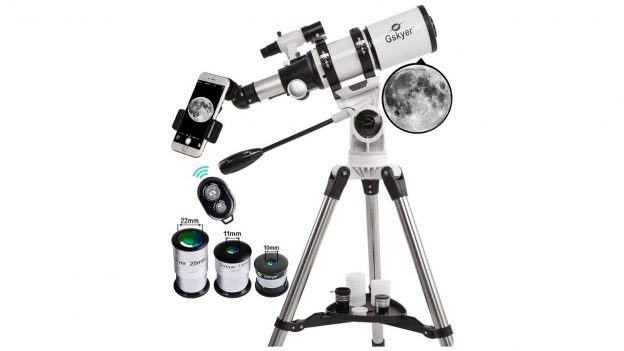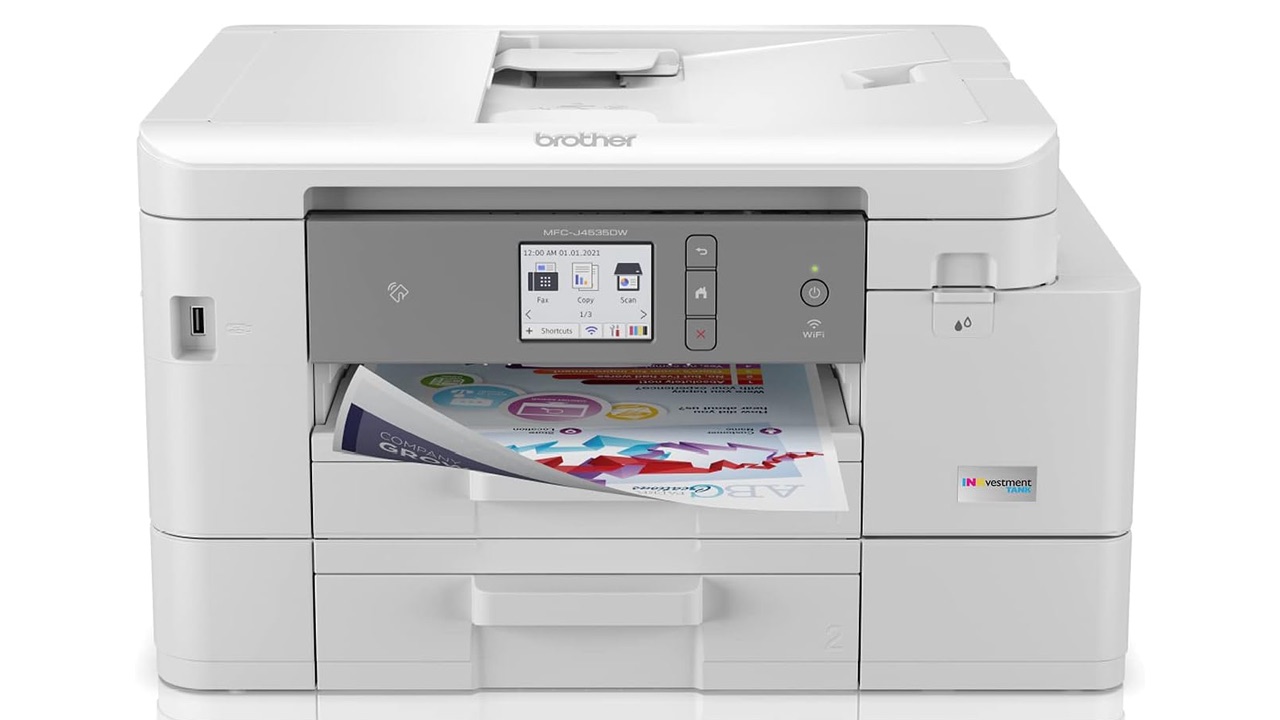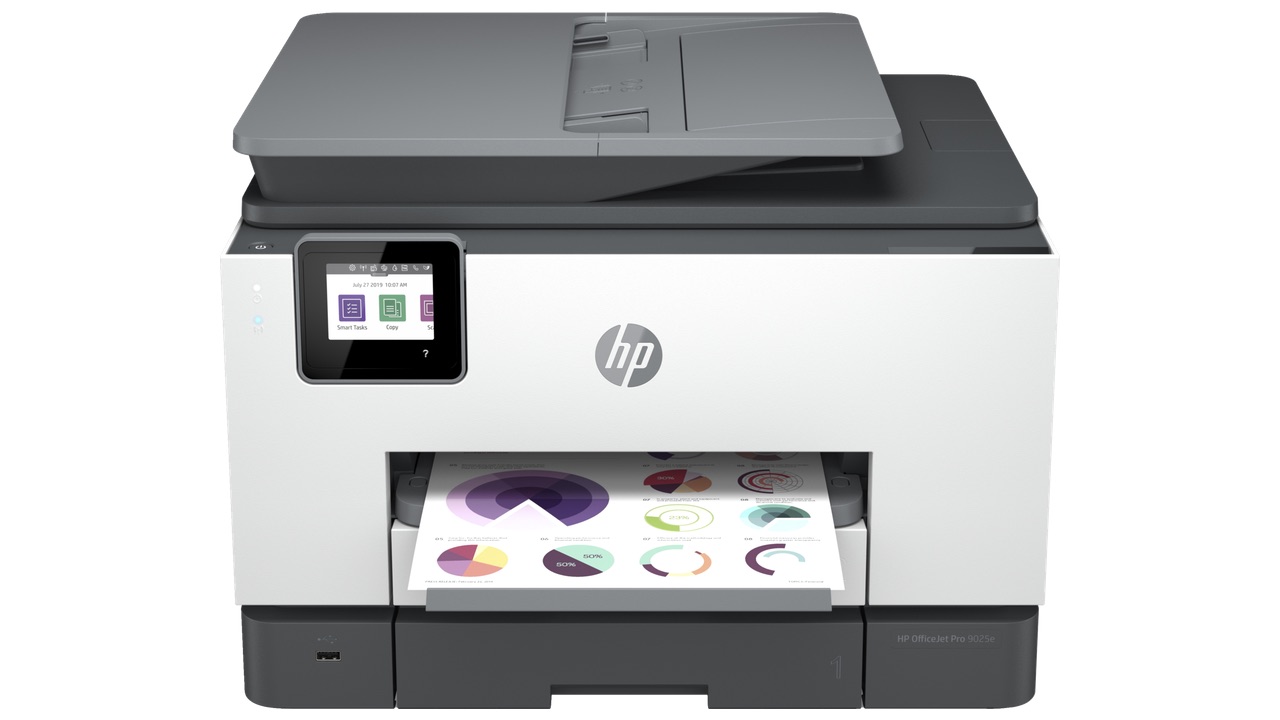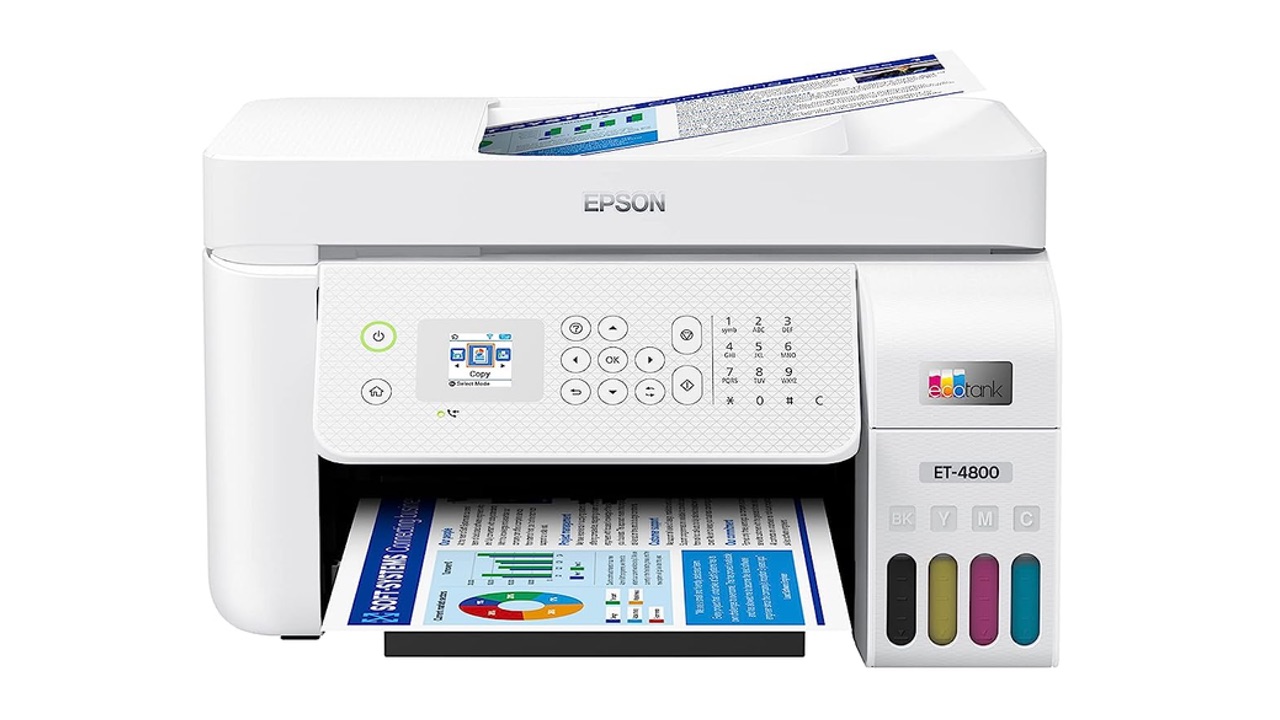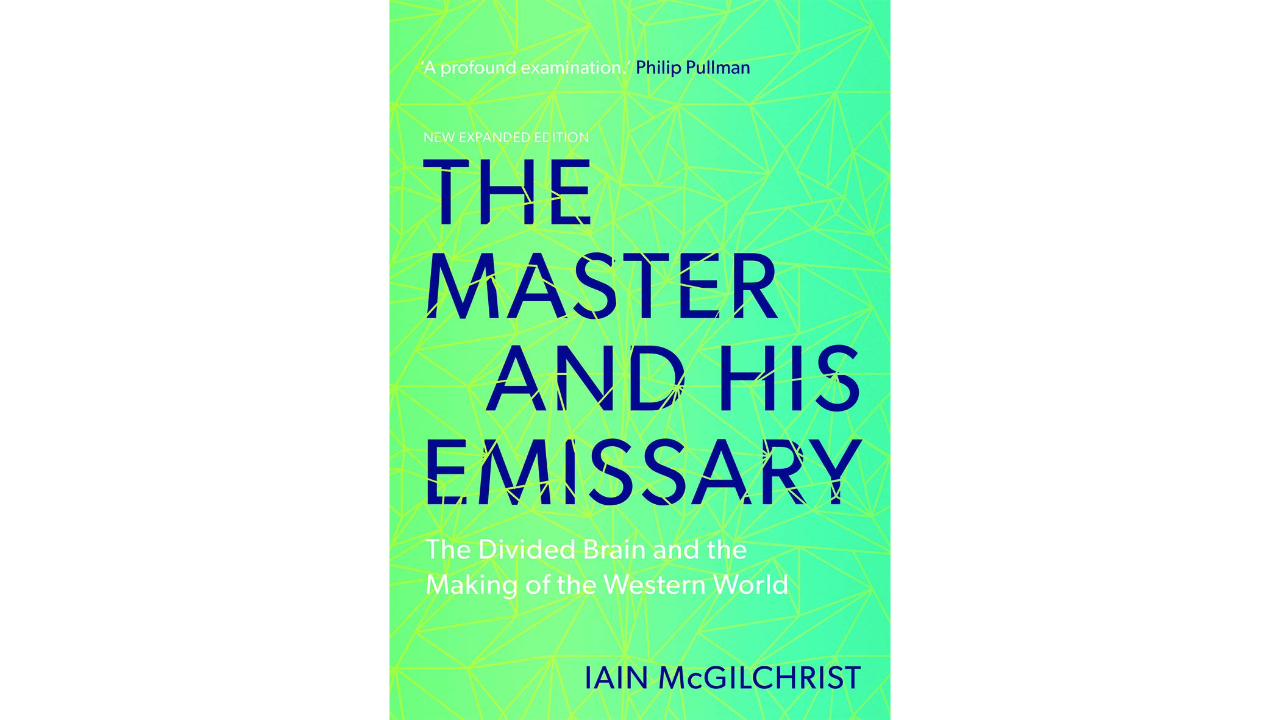From unveiling the mysteries of the cosmos to sparking wonder in the eyes of enthusiasts, the best telescopes stand as gateways to the infinite, bringing the wonders of the universe within our reach and enriching our understanding of the cosmos.
Best Overall | Bang for Your Buck | Best on a Budget |
Celestron NexStar 8SE | Orion SkyQuest XT6 | Gskyer Telescope |
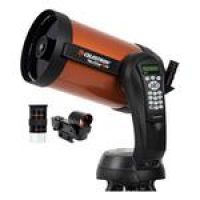 | 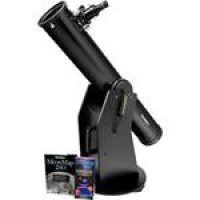 | 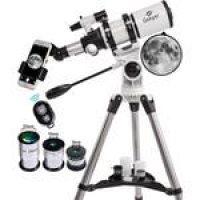 |
A top-performing, computerized telescope offering exceptional optics and user-friendly features for an immersive stargazing experience. | An excellent beginner-friendly Dobsonian reflector telescope, delivering impressive views of celestial objects at an exceptional price point. | A budget-friendly refracting telescope offering clear views and ease of use, perfect for sparking an interest in astronomy, especially among kids and novice astronomers. |
What Is a Telescope?
The best telescopes are optical instruments designed to magnify and gather light from distant celestial objects, enabling observation and study of astronomical phenomena such as planets, stars, galaxies, and nebulae. By utilizing lenses or mirrors, telescopes enhance the visibility of these celestial bodies beyond what the naked eye can perceive, unlocking the beauty and secrets of the universe.
Why Buy Telescope?
Investing in a telescope offers more than just a glimpse into space; it’s an invitation to explore the unknown. Whether for scientific curiosity, stargazing hobbies, astrophotography, or educational purposes, owning a telescope opens a door to a realm of cosmic discovery and provides an intimate connection with the cosmos.
Best Telescopes: What to Look For
These criteria serve as essential guidelines, allowing individuals to make informed decisions when selecting the best telescope to suit their needs and interests.
Best Overall: Celestron NexStar 8SE
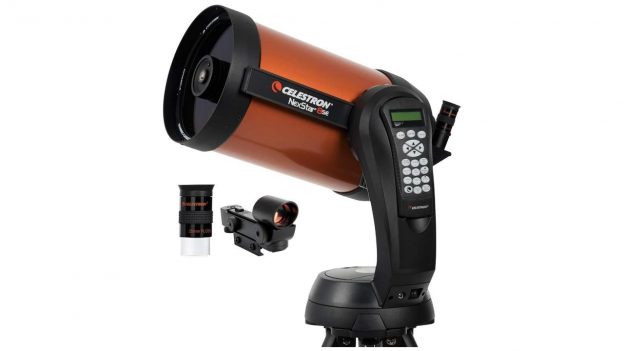
Image credit: Celestron
Pros:
Cons:
The Celestron NexStar 8SE stands out as the best telescope due to a combination of cutting-edge technology and impressive optics. Its 8-inch aperture and Schmidt-Cassegrain optics deliver exceptional light-gathering ability, providing striking views of celestial wonders like Saturn’s rings, Jupiter’s features, and deep-sky objects such as the Whirlpool Galaxy and the Hercules Globular Cluster. This telescope’s versatility makes it suitable for both beginners and experienced observers, offering an economical price without compromising on performance.
The fully automated GoTo mount boasts a database of over 40,000 celestial objects, allowing users to effortlessly locate and track various astronomical targets. Its SkyAlign technology simplifies setup, aligning the telescope within minutes, even for those unfamiliar with the night sky. This ease of use extends to its compatibility with accessories like StarSense AutoAlign and SkyPortal WiFi Module, ensuring the telescope can grow with users as they delve deeper into astronomy.
Additionally, the telescope’s portability makes it ideal for weekend getaways or trips to dark sky sites. Its compact form factor and easy assembly allow users to enjoy stargazing virtually anywhere, enhancing the overall accessibility and enjoyment of celestial observation. Despite its lightweight nature, the NexStar 8SE offers exceptional optics and user-friendly features, making it a standout choice for astronomy enthusiasts seeking quality, convenience, and performance in one comprehensive package.
Bang for Your Buck: Orion 8944 SkyQuest XT6
Image credit: Orion
Pros:
Cons:
The Orion 8944 SkyQuest XT6 stands out as the best “bang for your buck” telescope due to its exceptional balance between price and performance. Featuring a substantial 6-inch aperture, this Dobsonian reflector telescope offers incredible value by providing impressive views of celestial objects without breaking the bank. Its f/8 parabolic mirror ensures fantastic observations of the Moon, planets, as well as deep-sky treasures like nebulas, galaxies, and star clusters, offering a lifetime of viewing possibilities.
One of its key advantages is its simplicity and ease of use, making it an excellent choice for beginners and families alike. The Dobsonian base provides stability, minimizing vibrations even at higher magnifications, allowing for clear and steady views of various astronomical wonders. With straightforward point-and-view navigation, users can quickly set up and start observing the night sky within minutes, maximizing their stargazing experience without the complexity often associated with more advanced telescopes.
Additionally, while keeping costs low, the XT6 doesn’t compromise on essential features. It comes equipped with a 1.25-inch Rack-and-pinion focuser, EZ Finder II aiming device, 25mm Sirius Plossl eyepiece, and a quick-collimation cap, providing the necessary accessories for enjoyable celestial observations. Its simplicity, combined with its quality optics and affordability, makes the Orion 8944 SkyQuest XT6 an ideal choice for those seeking a reliable, entry-level telescope that offers exceptional value and delivers breathtaking views of the cosmos.
Best on a Budget: Gskyer Telescope
Image credit: Gskyer
Pros:
Cons:
The Gskyer Telescope stands out as the best budget telescope due to its combination of affordability and decent performance. With an 80mm aperture and 400mm focal length, this refractor telescope provides enhanced light gathering and image brightness, making it suitable for beginners and children eager to explore the night sky. The telescope comes with three replaceable eyepieces (16X, 40X, 80X) and a 3X Barlow lens, offering various magnification options for observing the Moon, planets, and even distant wildlife, making it a versatile tool for both astronomy and terrestrial viewing.
Equipped with a 6*30 finderscope with a mounting bracket and an erect-image diagonal, this telescope ensures ease of use and accurate object location. The adjustable tripod, made of stainless steel, allows for stable positioning and multiple viewing positions, catering to different heights and preferences. Its user-friendly design and straightforward setup make it an excellent choice for kids and novice stargazers, fostering an early interest in astronomy.
Despite its limitations for advanced astronomical observations, the Gskyer Telescope excels as an entry-level instrument, providing satisfactory views of celestial objects. With its inclusive package containing necessary accessories like eyepieces, finderscope, and a Barlow lens, coupled with reliable customer service and a 1-year care warranty, this telescope offers beginners a cost-effective gateway to explore and appreciate the wonders of the cosmos without a substantial financial investment.
Best for Astrophotography: Sky-Watcher EvoStar 120ED
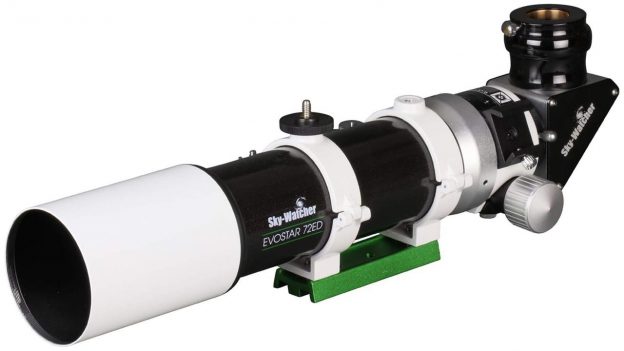
Image credit: Sky Watcher
Pros:
Cons:
The Sky-Watcher EvoStar 120ED stands out as the best astrophotography telescope due to its superior optical performance and versatility. Featuring a matched doublet objective with one synthetic fluorite element, this refractor telescope excels in color correction, delivering sharp and clear images with minimal aberrations. The proprietary Metallic High-Transmission Coatings (MHTC) further enhance the optics, ensuring high-definition resolution and crisp views of celestial objects, making it an ideal choice for both visual observers and astrophotographers.
Its compact and portable design adds to its appeal, making it a suitable travel companion for amateur astronomers. Despite its smaller size, the EvoStar 120ED boasts impressive optical capabilities, allowing users to capture stunning images of the night sky without the need for a bulky setup. This portability, coupled with its exceptional optics, makes it an excellent choice for enthusiasts looking to delve into astrophotography without compromising on image quality.
While it may have a higher price point compared to entry-level telescopes, the EvoStar 120ED justifies its cost through its premium optical performance. With the ability to evolve alongside users’ skills, this telescope caters to both beginners and experienced astrophotographers, providing a pathway to professional-level imaging. Its 10:1 dual-speed Crayford-style focuser ensures precise focusing for astrophotography endeavors, while the included accessories like tube rings, dovetail, and foam-lined aluminum case add convenience and value to the overall package, making the Sky-Watcher EvoStar 120ED an excellent investment for those seeking top-notch astrophotography capabilities.
Best for Portability: Orion 10022 StarMax
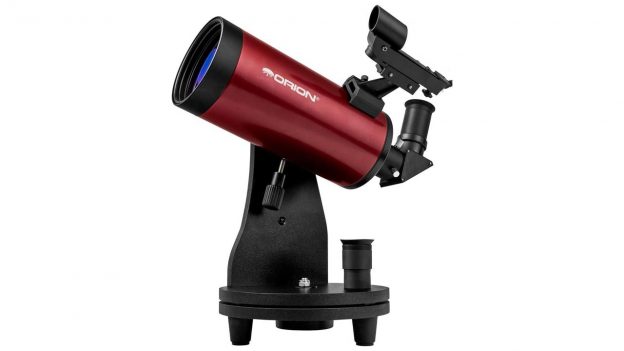
Image credit: Orion
Pros:
Cons:
The Orion 10022 StarMax stands out as an excellent astrophotography telescope due to its exceptional portability and impressive optical capabilities. Despite its compact tabletop design, this Maksutov-Cassegrain telescope boasts a powerful 90mm aperture, enabling it to gather substantial light for detailed views of celestial objects. Its 1250mm focal length provides significant magnification power, offering close-up views of the Moon’s landscapes, Saturn’s rings, Jupiter’s moons, and various deep-sky treasures like star clusters and nebulas. This telescope is a grab-and-go astrophotographer’s dream, providing quality optics in a portable package.
Weighing only 6.5 pounds when assembled, the StarMax 10022 is incredibly lightweight and can be easily transported for on-the-go stargazing experiences. Its stable swivel base offers a secure viewing foundation and can be attached to a sturdy table or adapted for use with specific tripods, ensuring stability during observations. Additionally, the telescope comes equipped with essential accessories, including two 1.25″ eyepieces (25mm and 10mm focal lengths), an EZ Finder II reflex sight for easy aiming, and a 90-degree mirror diagonal for comfortable night sky viewing.
While it may have limitations due to its tabletop or specific tripod usage, the StarMax 10022 compensates with its compactness and ease of setup, making it an ideal choice for astrophotographers seeking a portable and capable telescope for capturing stunning images of celestial objects without compromising on optical quality.

